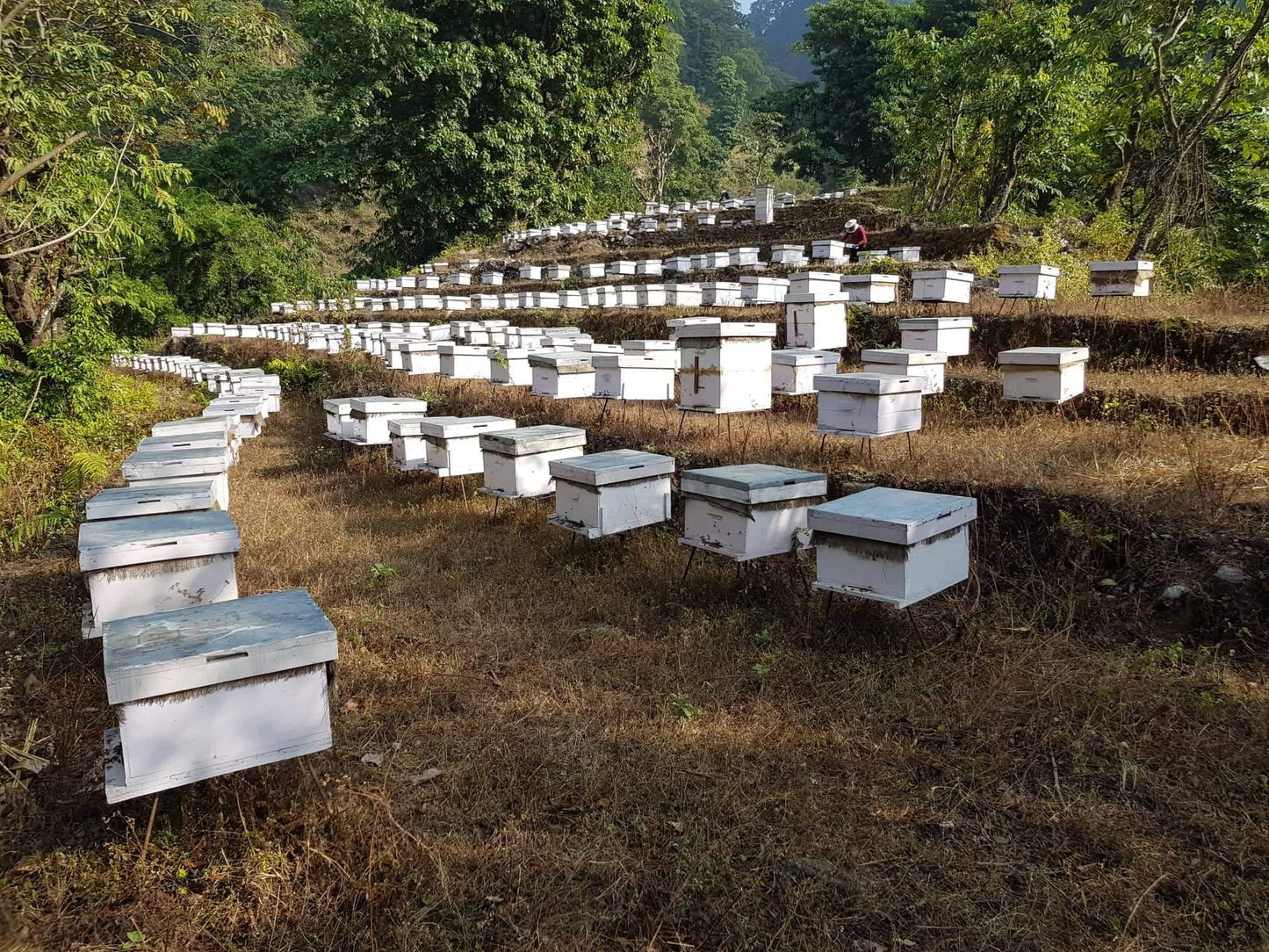1
/
of
2
BMSM
Bee Hive including Bees/ Queen Bee
Bee Hive including Bees/ Queen Bee
SKU:BMSM-BH
Regular price
Rs0.00 NPR
Regular price
Sale price
Rs0.00 NPR
Unit price
/
per
Couldn't load pickup availability
In the villages of Nepal, domestic honey bees play a crucial role in the local ecosystem and the lives of residents. These industrious insects construct hives using various methods, showcasing the intricate relationship between humans and bees.
Traditional beekeeping methods involve providing hollowed logs as natural habitats for honey bees. Villagers carve out these logs, creating rustic shelters that serve as homes for the bees. Placed strategically in and around villages, these traditional hives reflect a deep understanding of the coexistence between people and bees, emphasizing sustainable practices.
In regions with diverse topography, such as mountainous areas, the sight of cliff-hanging hives is a testament to the adaptability of domestic honey bees. These bees create colossal combs suspended from rocky cliffs, showcasing their ability to thrive in diverse environments.
Wallhives, integrated into the architecture of rural homes, provide another glimpse into the beekeeping practices for domestic honey bees. These wall cavities have small openings for bees on the outside and convenient harvest windows on the inside, highlighting the integration of beekeeping into daily life.
As Nepal embraces modern beekeeping techniques, frame hives are becoming increasingly popular among domestic beekeepers. These hives offer efficiency in honey extraction and colony management, allowing for a more controlled and productive beekeeping process.
Beyond their ecological contributions, domestic honey bees hold cultural significance in Nepal. Honey is revered in Hindu traditions, classified as one of the five 'Amrit,' or heavenly foods. It plays a central role in religious rituals, including worship and wedding ceremonies, symbolizing auspicious beginnings and fostering a connection between spirituality and nature.
In the heart of Nepal's villages, domestic honey bees thrive, contributing not only to biodiversity and sustainable livelihoods but also embodying a harmonious relationship between nature and the communities that depend on them. As traditional practices coalesce with modern beekeeping techniques, domestic honey bees continue to shape the landscape, ensuring the preservation of biodiversity and cultural heritage in Nepal.
Traditional beekeeping methods involve providing hollowed logs as natural habitats for honey bees. Villagers carve out these logs, creating rustic shelters that serve as homes for the bees. Placed strategically in and around villages, these traditional hives reflect a deep understanding of the coexistence between people and bees, emphasizing sustainable practices.
In regions with diverse topography, such as mountainous areas, the sight of cliff-hanging hives is a testament to the adaptability of domestic honey bees. These bees create colossal combs suspended from rocky cliffs, showcasing their ability to thrive in diverse environments.
Wallhives, integrated into the architecture of rural homes, provide another glimpse into the beekeeping practices for domestic honey bees. These wall cavities have small openings for bees on the outside and convenient harvest windows on the inside, highlighting the integration of beekeeping into daily life.
As Nepal embraces modern beekeeping techniques, frame hives are becoming increasingly popular among domestic beekeepers. These hives offer efficiency in honey extraction and colony management, allowing for a more controlled and productive beekeeping process.
Beyond their ecological contributions, domestic honey bees hold cultural significance in Nepal. Honey is revered in Hindu traditions, classified as one of the five 'Amrit,' or heavenly foods. It plays a central role in religious rituals, including worship and wedding ceremonies, symbolizing auspicious beginnings and fostering a connection between spirituality and nature.
In the heart of Nepal's villages, domestic honey bees thrive, contributing not only to biodiversity and sustainable livelihoods but also embodying a harmonious relationship between nature and the communities that depend on them. As traditional practices coalesce with modern beekeeping techniques, domestic honey bees continue to shape the landscape, ensuring the preservation of biodiversity and cultural heritage in Nepal.
Share




